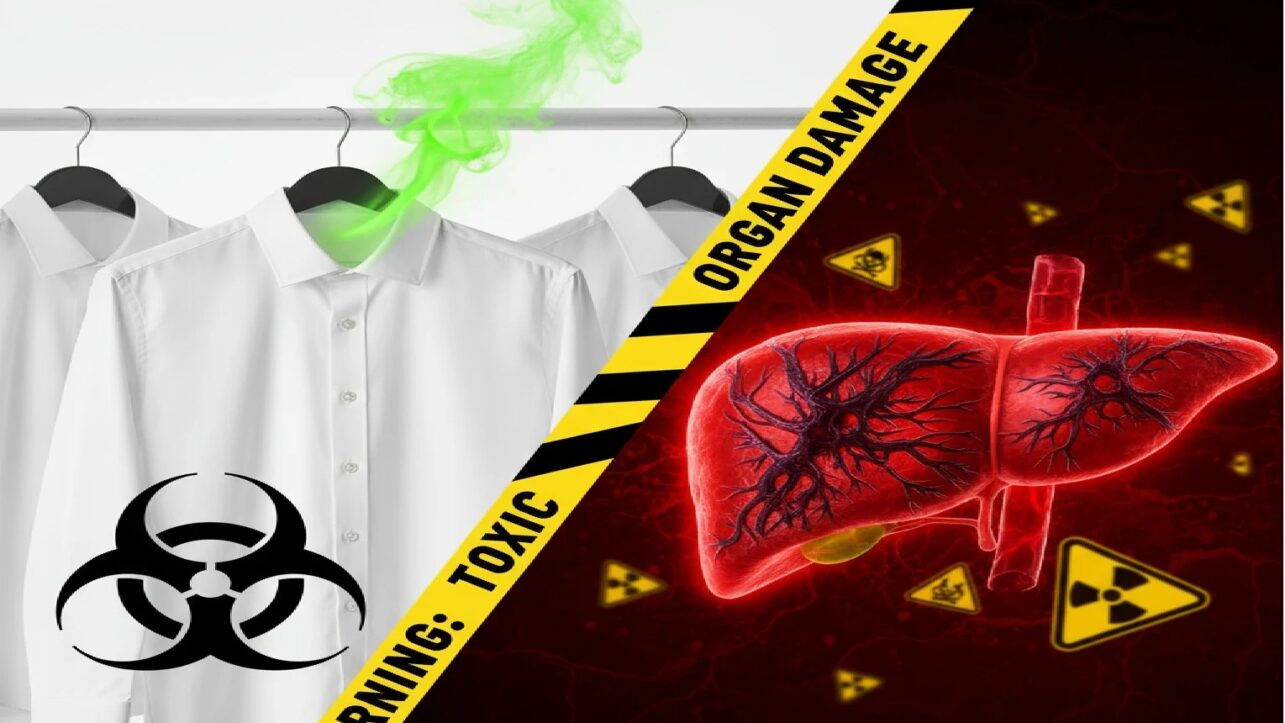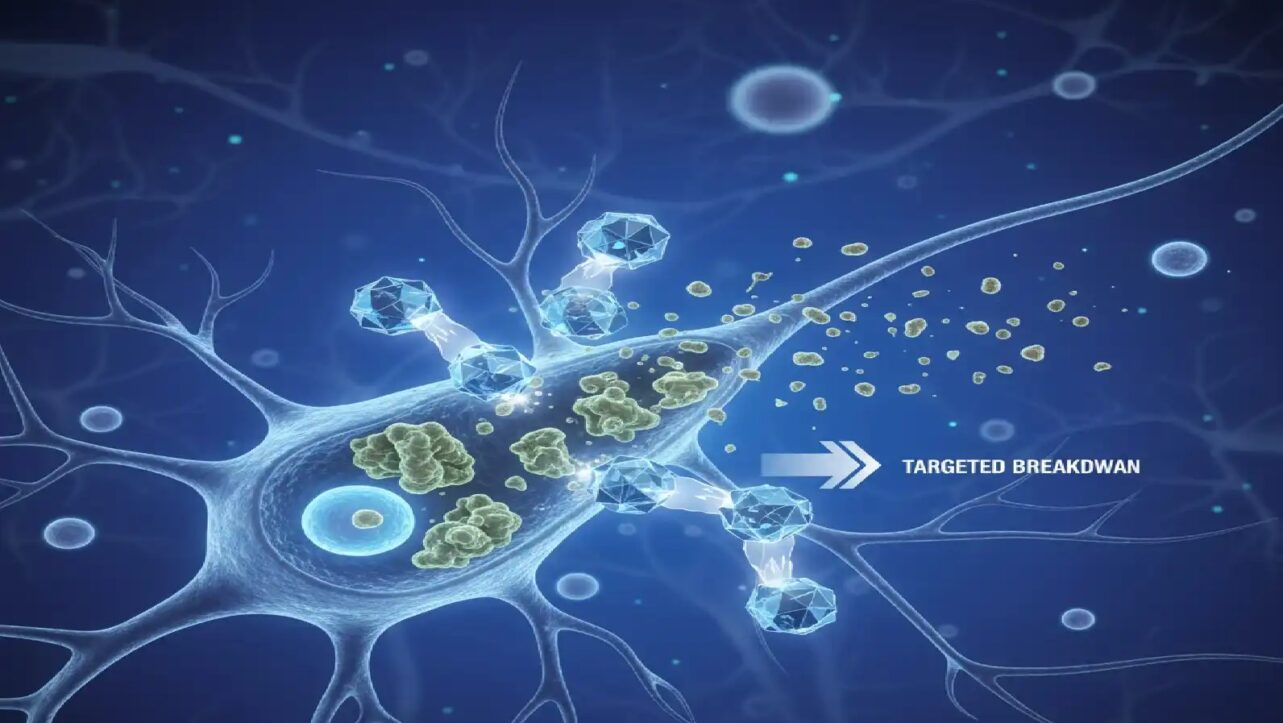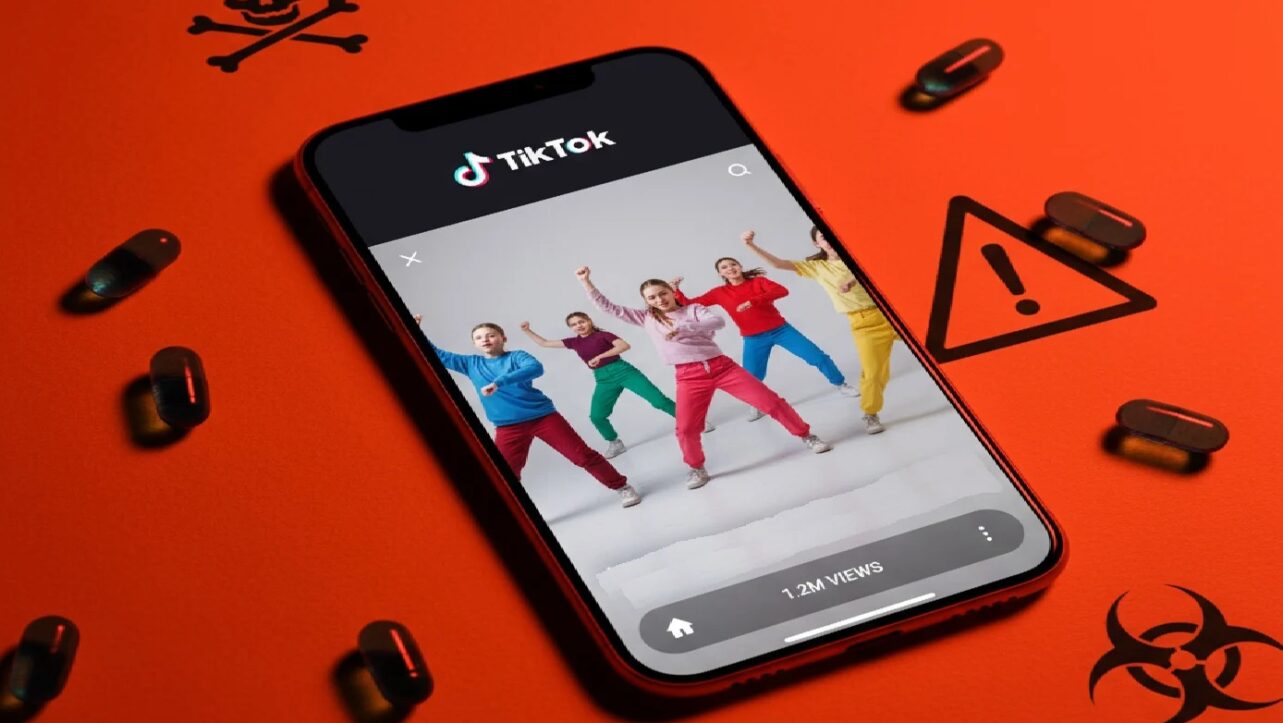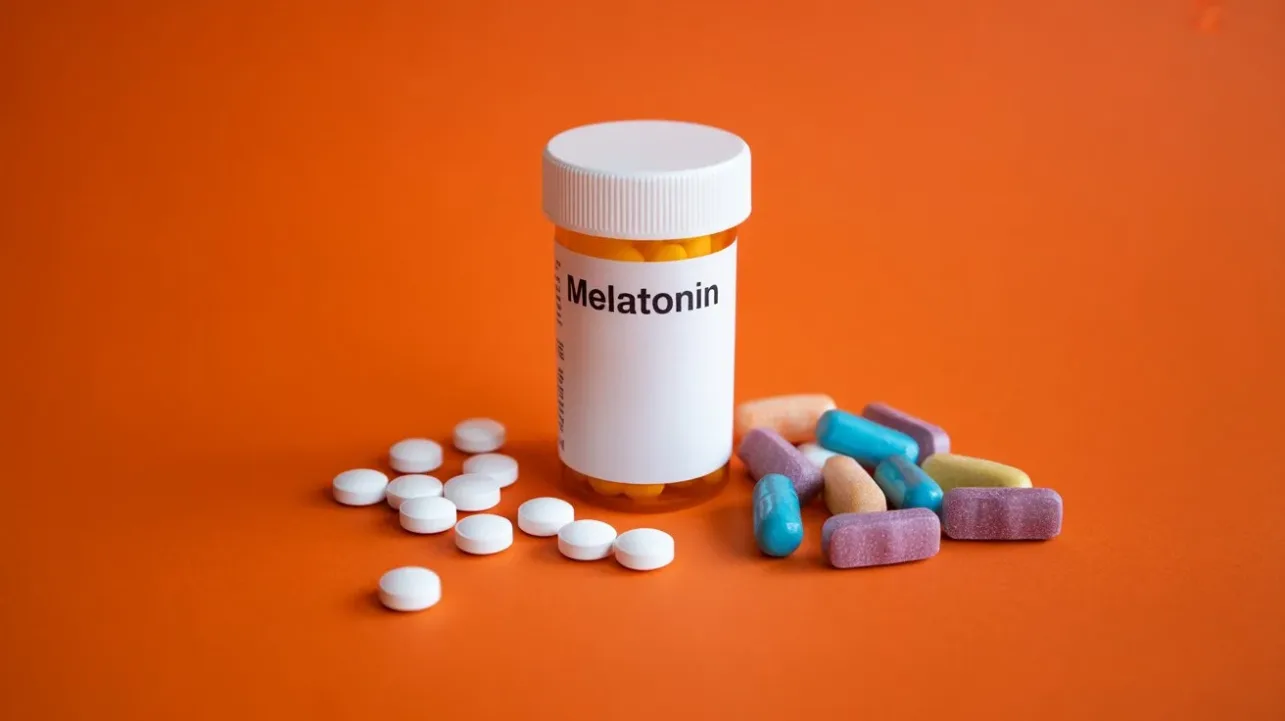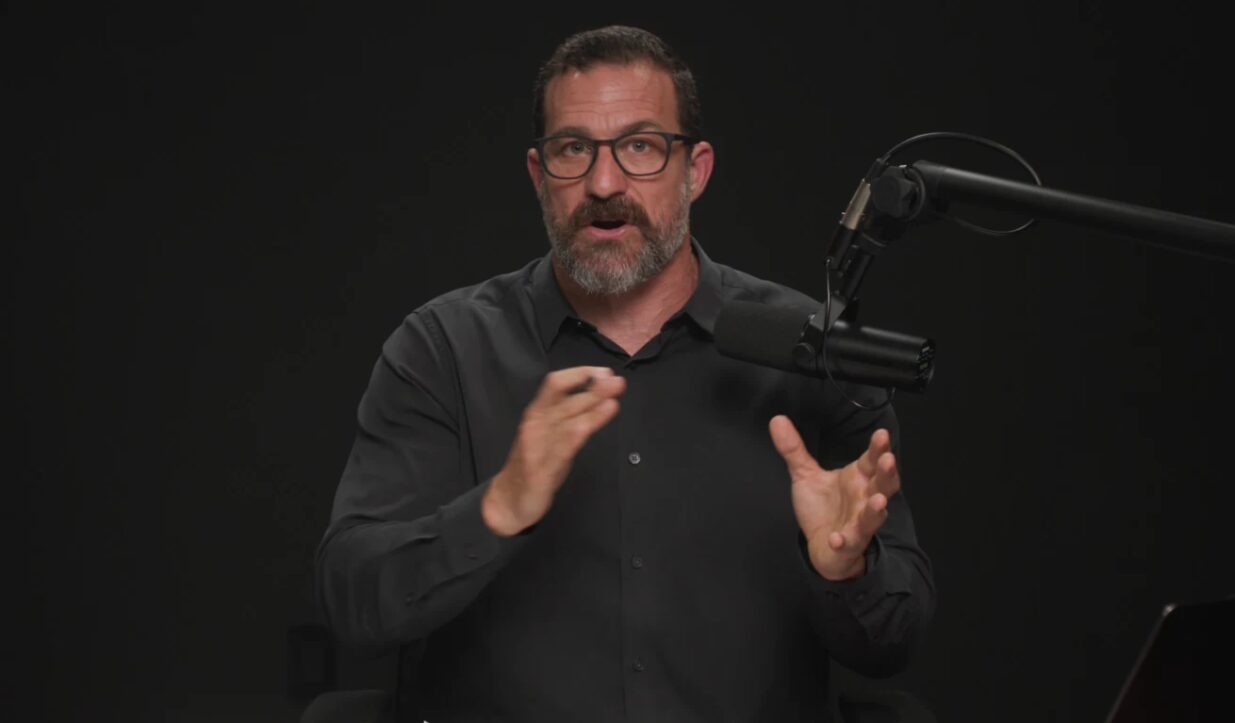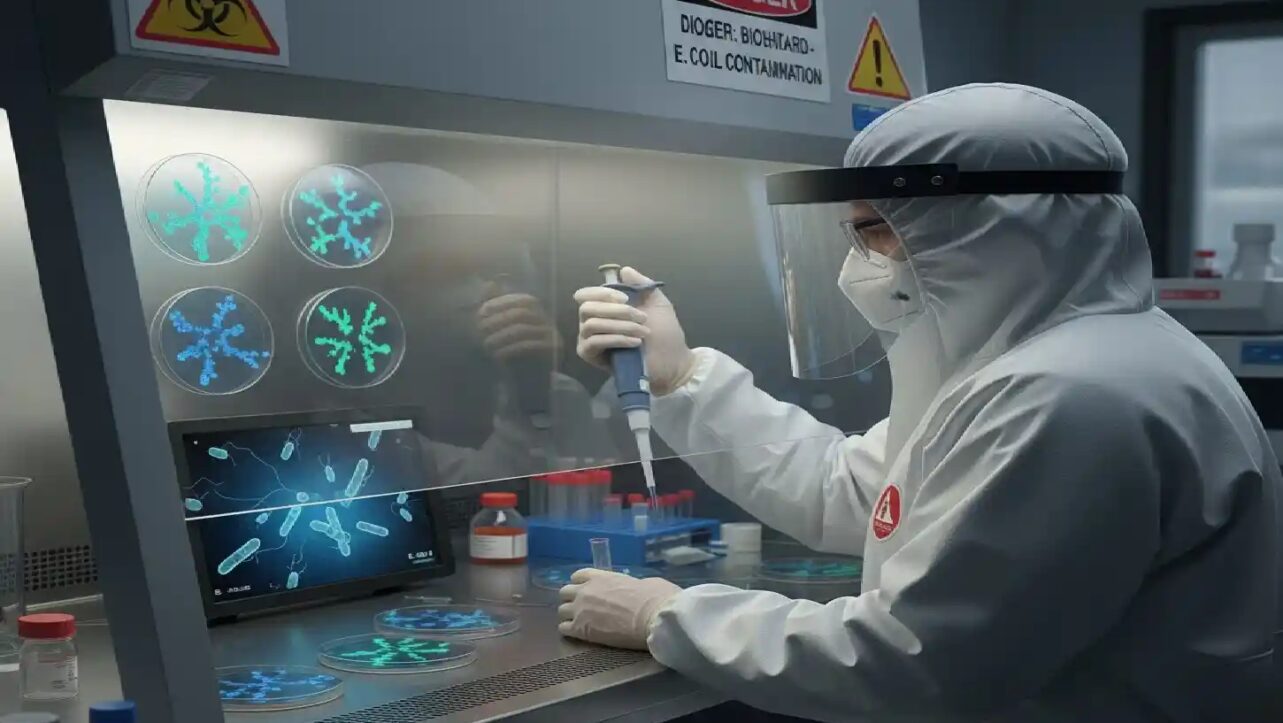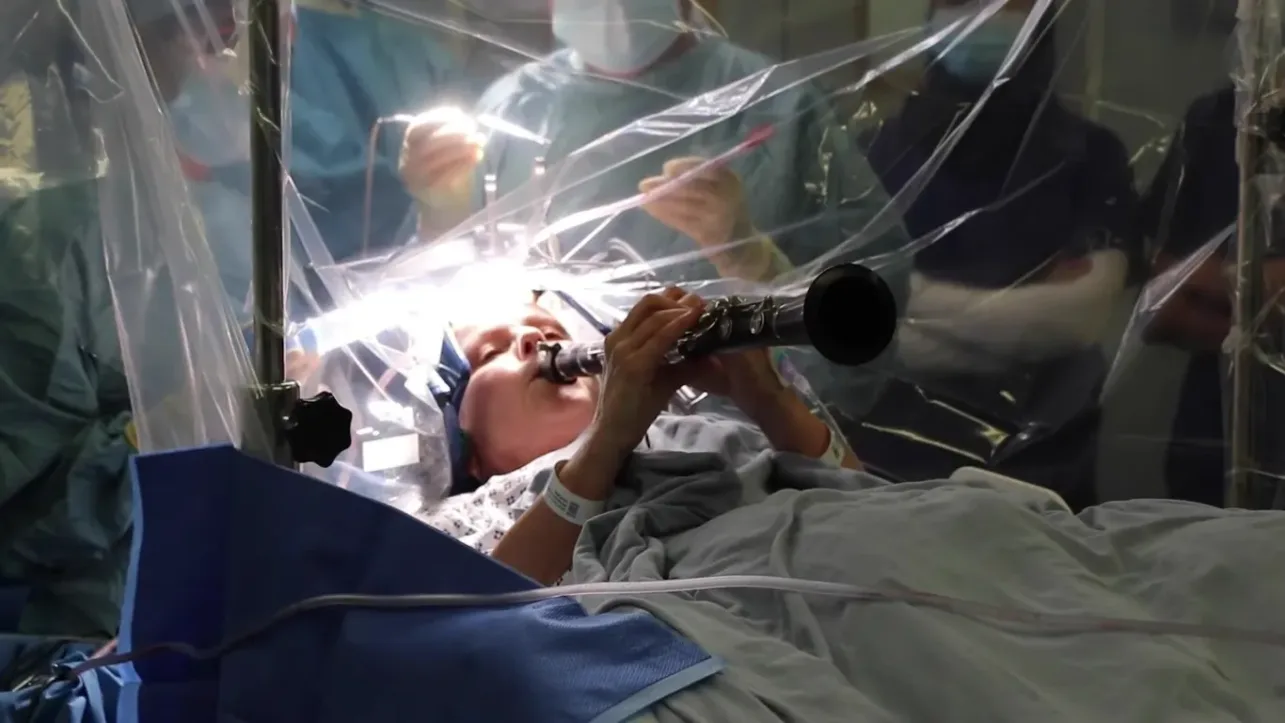That crisp, freshly dry-cleaned shirt hanging in your closet might be slowly poisoning you. A groundbreaking study from USC’s Keck Medicine, published in Liver International, has uncovered a terrifying connection between a common dry-cleaning chemical and severe liver damage—and the findings suggest millions of Americans may be at risk without knowing it.
The Silent Liver Killer Hiding in Your Wardrobe
Tetrachloroethylene (PCE), a colorless synthetic chemical used in dry cleaning for decades, doesn’t just make your clothes crisp—it triples your risk of significant liver fibrosis, according to the first-ever study examining PCE levels in human blood and liver disease correlation.
Liver fibrosis is an excessive amount of scar tissue in the liver that can lead to liver cancer, liver failure, or death. And unlike traditional liver disease causes—alcohol, obesity, diabetes, or hepatitis—PCE-induced liver damage strikes without warning, even in otherwise healthy individuals.
“Patients will ask, how can I have liver disease if I don’t drink and I don’t have any of the health conditions typically associated with liver disease, and the answer may be PCE exposure,” said Dr. Brian P. Lee, a hepatologist and liver transplant specialist with Keck Medicine who led the study.
The Shocking Numbers: 7% of Americans Already Exposed
Using data from the National Health and Nutrition Examination Survey (NHANES) covering 2017-2020—the most recent years for which information is available—researchers analyzed PCE concentrations in the blood of Americans aged 20 and older. The findings are alarming:
- 7% of the US population has detectable PCE in their blood
- Those exposed to PCE are three times more likely to develop significant liver fibrosis
- For every one nanogram per milliliter increase in PCE concentration, the odds of significant liver fibrosis increase five-fold
- Traditional risk factors (alcohol use, obesity) don’t appear to play a role when PCE is present
Dr. Lee emphasized the study’s most troubling implication: “The findings suggest that exposure to PCE may be the reason why one person develops liver disease while someone with the exact same health and demographic profile does not“.
It’s Not Just Dry Cleaning—PCE Is Everywhere
While dry cleaning is the primary source of PCE exposure, this toxic chemical lurks in surprising places throughout your home.
Common PCE-containing products:
How you’re exposed:
- Air exposure: The chemical can be slowly released into the air over time from clothes that have been dry cleaned
- Drinking water: PCE can be present in drinking water from contaminated sites due to spills and improper disposal that seeps into soil and groundwater
- Workplace exposure: Dry-cleaning workers face prolonged, direct contact
The Rich Are Most at Risk—and Don’t Know It
In a surprising twist, the study found people from higher-income households were most at risk of PCE exposure.
“People with higher incomes may be more likely to use dry cleaning services, which could increase their exposure to PCE,” Dr. Lee explained. “However, people who work in dry cleaning facilities may also face elevated risk due to prolonged, direct exposure to PCE at work“.
This means the very demographic investing in professional garment care to maintain appearance and status may be inadvertently destroying their liver health—a cruel irony of modern consumer culture.
PCE: Already Linked to Multiple Cancers
The liver damage revelation is just the latest in PCE’s growing rap sheet. The International Agency for Research on Cancer has classified PCE as a probable carcinogen, linking it to :
- Bladder cancer
- Multiple myeloma
- Non-Hodgkin lymphoma
Other studies have shown that exposure to PCE increased the risk of liver cancer, making this new finding on liver fibrosis—the precursor to liver cancer—even more concerning.
Why Traditional Liver Disease Risk Factors Don’t Apply
What makes this discovery particularly alarming is that alcohol use and fat buildup in the liver linked with obesity and other health factors did not appear to play a role in significant liver fibrosis when PCE was present.
This shatters conventional understanding of liver disease. Doctors have long relied on patient lifestyle factors to assess liver disease risk—asking about alcohol consumption, checking BMI, and screening for metabolic syndrome. But if PCE exposure is the culprit, even the healthiest patients with perfect lifestyle habits could be developing deadly liver scarring without any warning signs.
“This study, the first to examine the association between PCE levels in humans and significant liver fibrosis, underscores the underreported role environmental factors may play in liver health,” Dr. Lee stated.
The EPA Is Finally Banning It—But It’s Too Late for Millions
Due to its toxicity, the United States Environmental Protection Agency has launched a 10-year phaseout for the use of PCE in dry cleaning and has banned or placed workplace controls on other PCE applications.
But here’s the problem:
- The phaseout takes 10 years—meaning PCE will remain in use for another decade
- The chemical may remain present in applications and countries without similar regulations
- Millions of Americans have already been exposed during the decades PCE was used freely
- PCE can persist in groundwater contamination for years or decades
The Five-Fold Risk Multiplier
The researchers made a particularly disturbing discovery: for every one nanogram per milliliter increase in PCE concentration in the blood (one nanogram is one-billionth of a gram), an individual’s odds of having significant liver fibrosis increased five-fold.
This exponential relationship means even small increases in PCE exposure dramatically amplify liver disease risk—a finding that should alarm anyone who regularly uses dry-cleaning services.
The Results Hold Across All Demographics
The study’s findings remained steady independent of factors such as age, sex, race, ethnicity, and education level. This means PCE-induced liver damage doesn’t discriminate—it affects everyone equally, regardless of demographic background.
The only consistent predictor of PCE exposure was household income, with higher-income individuals showing greater exposure levels due to increased dry-cleaning service use.
How to Know If Your Liver Is Already Damaged
Liver fibrosis progresses silently. By the time symptoms appear—fatigue, yellowing skin, abdominal swelling, confusion—the damage is often irreversible.
Who should get screened:
- Anyone who regularly uses dry-cleaning services
- Dry-cleaning workers (current or former)
- People living near dry-cleaning facilities
- Those with unexplained liver abnormalities
- Higher-income individuals with frequent professional garment care
Dr. Lee emphasizes: “If more people with PCE exposure are screened for liver fibrosis, the disease can be caught earlier and patients may have a better chance of recovering their liver function“.
The Hidden Environmental Liver Disease Epidemic
This study represents a paradigm shift in understanding liver disease. For decades, medicine has focused almost exclusively on three causes: alcohol consumption, fat buildup linked to obesity and diabetes, or hepatitis B and C.
Dr. Lee’s research reveals that environmental toxins may play a far more significant role than previously recognized: “This study, the first to examine the association between PCE levels in humans and significant liver fibrosis, underscores the underreported role environmental factors may play in liver health“.
The implications are staggering:
- How many “unexplained” liver disease cases are actually environmental poisoning?
- What other household chemicals are silently destroying organs?
- How many people have been blamed for “lifestyle choices” when industrial toxins were the real culprit?
What Needs to Happen Next
Dr. Lee is calling for expanded research and better public health measures :
1. More research on environmental toxins and liver disease
“No doubt there are other toxins in our environment besides PCE that are dangerous to the liver,” he said.
2. Better screening protocols
Physicians should screen patients with unexplained liver disease for environmental exposures, not just lifestyle factors.
3. Public awareness campaigns
“We hope our research will help both the public and physicians understand the connection between PCE exposure and significant liver fibrosis,” Dr. Lee emphasized.
4. Early detection saves lives
“If more people with PCE exposure are screened for liver fibrosis, the disease can be caught earlier and patients may have a better chance of recovering their liver function,” said Lee.
5. Occupational health protections
Dry-cleaning workers need immediate safety measures and health monitoring due to prolonged, direct exposure to PCE at work.
The Unexplained Liver Disease Mystery—Solved
For years, patients have walked into hepatology clinics with advanced liver disease but no apparent cause. They don’t drink alcohol. They’re not obese. They don’t have diabetes or high cholesterol. They test negative for hepatitis B and C.
“Patients will ask, how can I have liver disease if I don’t drink and I don’t have any of the health conditions typically associated with liver disease,” Dr. Lee noted.
Now, for the first time, there’s an answer: PCE exposure may be destroying their livers without any of the traditional warning signs.
This discovery could finally explain countless cases of “cryptogenic” (unknown cause) liver disease that have puzzled physicians for decades.
The Bottom Line: Your Liver Isn’t Worth a Pressed Shirt
The convenience of dry cleaning comes with a hidden cost measured in liver function, cancer risk, and potentially, years of life lost.
With PCE shown to triple liver fibrosis risk independent of all traditional risk factors—and with a five-fold increase in odds for every tiny increase in blood concentration—continuing to use dry-cleaning services that employ this chemical is a gamble with your health.
The good news? Unlike genetic liver disease or years of alcohol abuse, PCE exposure is completely preventable. Avoiding dry-cleaning services that use PCE, airing out previously dry-cleaned clothes, and eliminating PCE-containing household products can eliminate the risk entirely.
As Dr. Lee’s groundbreaking research makes clear: environmental toxins deserve equal attention to lifestyle factors in preventing liver disease—and that starts with the chemicals we willingly bring into our homes and onto our bodies.
Liver disease is usually caused by alcohol, obesity, or hepatitis. Now we know there’s a fourth culprit hiding in your closet.
About the Study:
The research was published in Liver International and conducted by Brian P. Lee, MD, MAS, a hepatologist and liver transplant specialist with Keck Medicine of USC. The study used data from the National Health and Nutrition Examination Survey (NHANES), a nationally representative survey of the United States population, tracking PCE exposure through blood concentration in people aged 20 and older from 2017-2020.
Source: Keck Medicine of USC – “Common toxin linked to liver disease”
Health Disclaimer: This article is for informational purposes only and should not replace professional medical advice. If you have concerns about PCE exposure or liver health, consult a qualified healthcare provider immediately.

